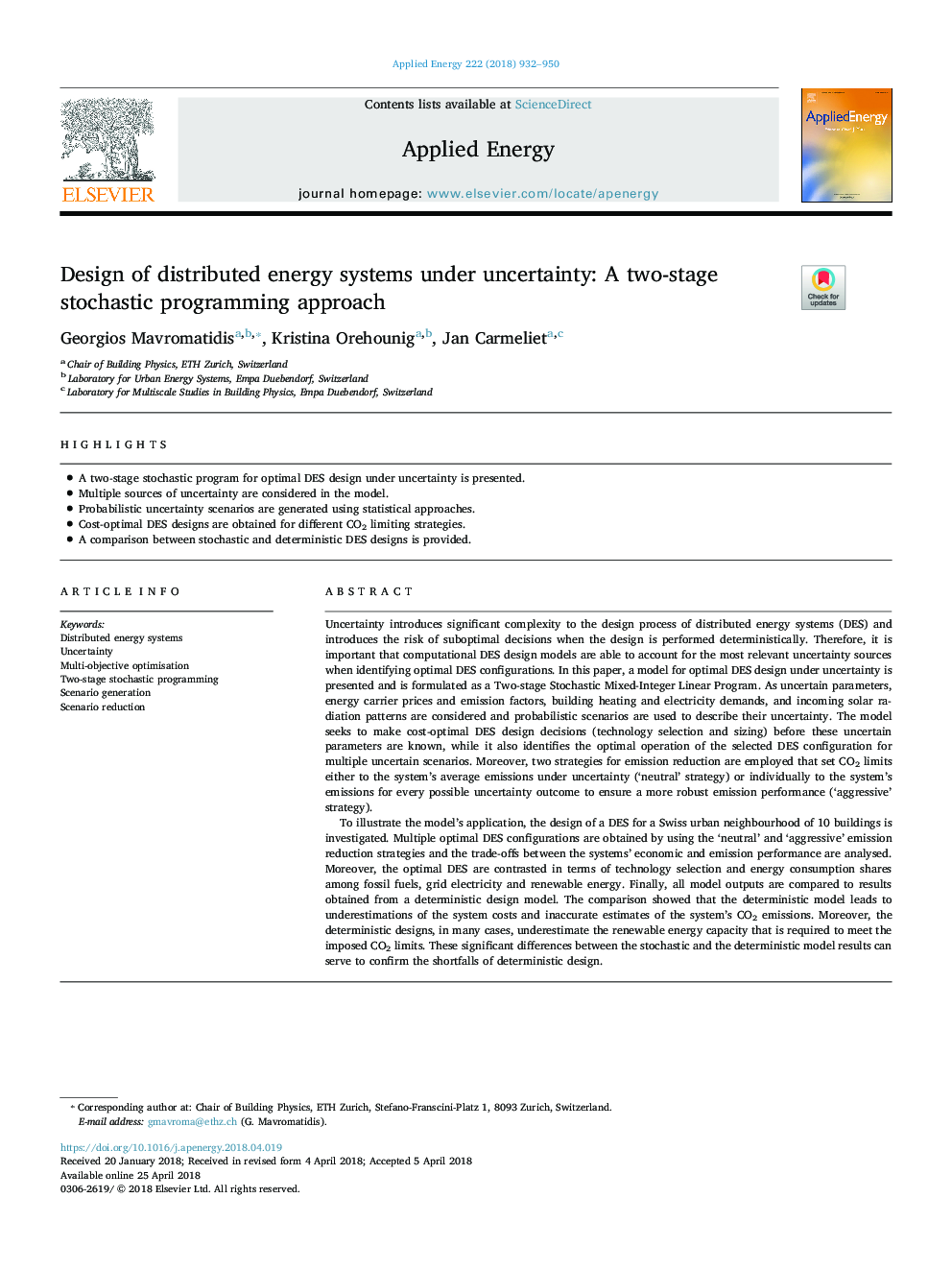| Article ID | Journal | Published Year | Pages | File Type |
|---|---|---|---|---|
| 6680223 | Applied Energy | 2018 | 19 Pages |
Abstract
To illustrate the model's application, the design of a DES for a Swiss urban neighbourhood of 10 buildings is investigated. Multiple optimal DES configurations are obtained by using the 'neutral' and 'aggressive' emission reduction strategies and the trade-offs between the systems' economic and emission performance are analysed. Moreover, the optimal DES are contrasted in terms of technology selection and energy consumption shares among fossil fuels, grid electricity and renewable energy. Finally, all model outputs are compared to results obtained from a deterministic design model. The comparison showed that the deterministic model leads to underestimations of the system costs and inaccurate estimates of the system's CO2 emissions. Moreover, the deterministic designs, in many cases, underestimate the renewable energy capacity that is required to meet the imposed CO2 limits. These significant differences between the stochastic and the deterministic model results can serve to confirm the shortfalls of deterministic design.
Keywords
Related Topics
Physical Sciences and Engineering
Energy
Energy Engineering and Power Technology
Authors
Georgios Mavromatidis, Kristina Orehounig, Jan Carmeliet,
